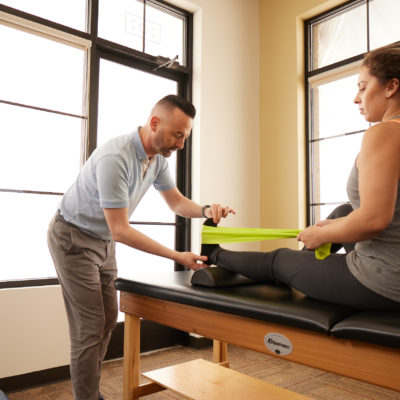
After an ankle sprain, physical therapy can help ensure you won’t experience continued problems.
Ankle sprains typically occur when the ankle is rolled or twisted in an awkward position, such as when you are misplaying sports or land on an uneven surface; what happens is the ligaments on the side of the ankle are overstretched resulting in an injury.
Physical therapy for a sprained ankle will help you get back to daily activities while helping you avoid long-term complications that can occur without proper rehabilitation.


For the first 24 to 48 hours, protection, optimal loading, ice, compression, and elevation (POLICE) are recommended. Your physician or physical therapist may also recommend crutches.
After the first 48 hours, our goal is to get you back to daily activities and prevent complications like loss of function, decreased movement, chronic pain, swelling, and joint instability.
Your ankle sprain treatment may include:

*Services are not available at every location. Visit our Locations page for more details.